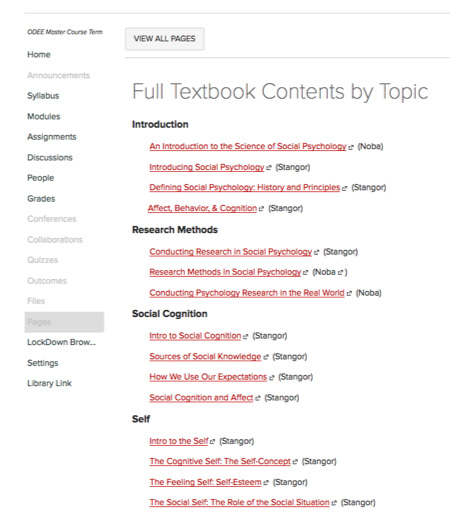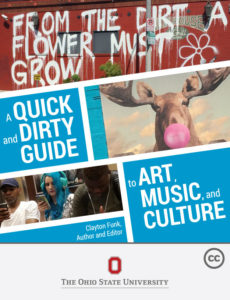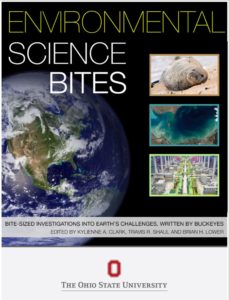Additional University Perspectives and Experience
19 ALX and Faculty-Produced Content at Ohio State
Stephanie Orr, Director of Learning Experience, Office of Distance Education and eLearning, Ohio State University
Introduction
The Affordable Learning Exchange (ALX) was created at the Ohio State University to help instructors take ownership of their courses and content. Operating out of the Office of Distance Education and eLearning, the group helps faculty navigate the waters of affordable resources and find creative solutions that promote student savings. This includes re-imagining the textbook, encouraging innovation in content production, and empowering faculty through grants and training opportunities to adopt, adapt, create and share open educational resources whenever possible.
The ALX Model and Its Partners
ALX funds projects that help bridge the cost gap for students, while promoting excellent pedagogy and maintaining ownership of teaching and learning tools with the experts – Ohio State’s world-class faculty. But one size does not fit all: Faculty are encouraged to select resources that maintain the excellent teaching and learning experiences that students expect. Because of this, solutions can include a combination of free and open resources and original, faculty-produced content.
ALX utilizes the combined expertise of its partners across the university, including the University Center for the Advancement of Teaching, University Libraries, the Office of Distance Education and eLearning, and the Undergraduate Student Government. Thanks to the proficiency of these groups, ALX offers faculty guidance each step of the way.
Digital Publishing with ALX
Digital publishing is a pillar of the ALX offerings, as many faculty undertake projects that require some amount of original content production. Publishing with ALX began as the Book Launch program, which boasted three cohorts consisting of 30 authors who ultimately created 16 books. When Book Launch became part of the catalog of ALX support offerings, publishing transitioned from the iBooks platform to WordPress-based Pressbooks. This switch allows faculty authors to benefit from a familiar editing interface, a wide variety of exportable formats for reading on-the-go, flexibility in student device compatibility, and the ability to revise and re-export even after the initial publication.
Over time, the Pressbooks community at Ohio State has grown to include 128 users with 16 publicly and freely available titles, and over 100 titles that are either privately published or still in development. Learn more about a few of the projects below.
A Quick and Dirty Guide to Art, Music, and Culture
by Clayton Funk
This book covers popular art and music since 1945. Funk was one of Pressbooks first users and was involved in the pilot program. Through the authoring process, he learned the importance of self-editing, and ultimately decided not to include all the material he covered in his course in the book. What resulted is a lean, widely adaptable book that served as an important part of his course, which he conducted using a triangulation of resources including this book, the Carmen learning management system, and his class website.
Perspectives on Bias in Medicine
by Camilla Curren, MD
 The audience of this book is not only medical students, but also practitioners looking to improve the quality of their care. Based on the Harvard Implicit Bias Test, the book includes video interviews with both patients and care providers. These interviews represent an exciting collaboration with the medical professionals at Ohio State, and bring readers right into the hospital while they are learning. Curren was passionate about incorporating rich media content to bring the book to life online.
The audience of this book is not only medical students, but also practitioners looking to improve the quality of their care. Based on the Harvard Implicit Bias Test, the book includes video interviews with both patients and care providers. These interviews represent an exciting collaboration with the medical professionals at Ohio State, and bring readers right into the hospital while they are learning. Curren was passionate about incorporating rich media content to bring the book to life online.
Environmental ScienceBites
edited by Kylienne Clark, Travis Shaul, and Brian Lower
This title began as an iBook, and was integral in understanding the shift to Pressbooks. ScienceBites features a collection of student-authored essays on various environmental issues, edited and assembled by faculty coordinators in charge of the course. The book was so successful it necessitated a second edition, which has just recently been published. Having students author this textbook inspires increased engagement and presents an opportunity for young people to take an active part in their own education. The result is a source of pride for all involved.
Innovations in a Learning Management System
 Faculty content creation is not only for textbook authors; many of ALX’s grant winners have assembled their own teaching artifacts by curating existing open resources and hosting them in Canvas. In Social Psychology, Melissa Beers created a new “textbook” by combining relevant chapters from open textbooks. Pictured is the table of contents that Beers assembled in Canvas in order to present a familiar approach to students. Each chapter linked out to the assigned reading, so students could find everything they needed in their LMS as usual. Although the resulting product looks like a textbook, the method allowed Beers and her students to break free from the limits of a static text, and ensure materials were more closely tied to the topics covered in class.
Faculty content creation is not only for textbook authors; many of ALX’s grant winners have assembled their own teaching artifacts by curating existing open resources and hosting them in Canvas. In Social Psychology, Melissa Beers created a new “textbook” by combining relevant chapters from open textbooks. Pictured is the table of contents that Beers assembled in Canvas in order to present a familiar approach to students. Each chapter linked out to the assigned reading, so students could find everything they needed in their LMS as usual. Although the resulting product looks like a textbook, the method allowed Beers and her students to break free from the limits of a static text, and ensure materials were more closely tied to the topics covered in class.



